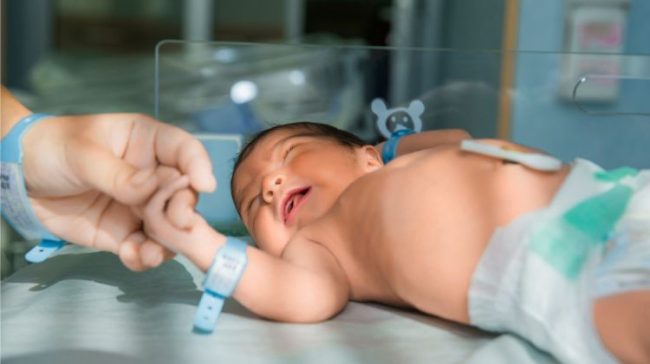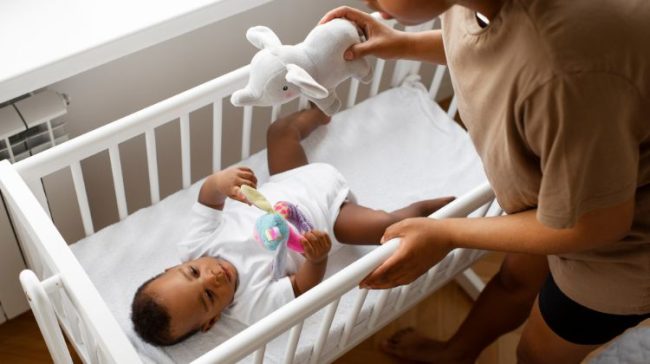Cesarean section (C-section) is a surgical procedure in which the baby is delivered through an incision in the mother’s abdomen. C-sections are sometimes necessary for the safety of the mother or baby, but they are also performed for non-medical reasons, such as maternal request.
The number of C-sections performed worldwide has increased significantly in recent decades. As a result, more women are having multiple C-sections. While multiple C-sections are generally safe, there are some increased risks associated with them.
In this article, we will explore the safety of multiple C-sections, the reasons for their occurrence, potential risks, and alternatives to consider.
Reasons for Multiple C-Sections
Women may find themselves in a situation where they require multiple C-sections for various reasons:
- Previous C-Sections: One of the most common reasons for multiple C-sections is having had a prior C-section delivery. In such cases, the decision to have a repeat C-section is often influenced by the type of uterine incision made during the previous surgery and the risks associated with attempting a vaginal birth after C-section (VBAC).
- Medical Complications: Certain medical conditions, such as placenta previa (when the placenta partially or completely covers the cervix), placenta accreta (abnormal attachment of the placenta to the uterine wall), or previous uterine surgery, may necessitate multiple C-sections to ensure the safety of both mother and baby.
- Fetal Health Concerns: If there are concerns about the health and well-being of the baby, such as breech presentation or fetal distress, a C-section may be recommended.
- Maternal Health: In cases where the mother’s health is at risk, such as severe preeclampsia or uncontrolled maternal medical conditions, a C-section may be the safest option for delivery.
- Personal Choice: Some women opt for repeat C-sections for non-medical reasons, such as fear of labor pain, previous traumatic birth experiences, or personal preferences.
Is it Safe to Have Multiple C-Sections?
The safety of having multiple C-sections is a complex issue, and it depends on several factors. Let’s examine both the potential benefits and risks associated with repeat C-sections.
Benefits of Multiple C-sections
Multiple C-sections can offer some benefits, including:
- Predictable Delivery: Elective repeat C-sections are typically scheduled, allowing for better planning and coordination with healthcare providers.
- Reduced risk of maternal death and serious complications: C-sections are generally safe for mothers and babies. In fact, they can reduce the risk of maternal death and serious complications in certain situations.
- Shorter labor and delivery: C-sections are typically faster than vaginal deliveries. This can be a benefit for mothers who are at risk of prolonged labor or other complications.
- Reduced risk of birth injuries: C-sections can reduce the risk of certain birth injuries, such as shoulder dystocia and fetal distress.
- Lower Risk of Vaginal Tears: Vaginal delivery can result in perineal tears, which may not occur in C-sections.
Risks of Multiple C-sections
The risks of multiple C-sections are similar to the risks of a first C-section, but they are generally higher. The more C-sections you have, the higher your risk of certain complications, including:
- Increased Surgical Risks: Each surgical procedure carries inherent risks, such as infection, bleeding, and complications related to anesthesia. Having multiple C-sections may increase the cumulative risk of these complications.
- Scar Tissue Formation: With each C-section, scar tissue (adhesions) can accumulate in the abdominal area. This can make subsequent surgeries more challenging and increase the risk of complications.
- Uterine Rupture: This is a rare but serious complication in which the uterus tears during labor. Uterine rupture is more likely to occur in women who have had previous C-sections.
- Placenta accreta: This is a condition in which the placenta implants too deeply into the uterine wall. Placenta accreta can cause heavy bleeding during and after surgery, and it may require the removal of the uterus.
- Placenta previa: This is a condition in which the placenta partially or completely covers the opening of the cervix. Placenta previa can increase the risk of premature birth and excessive bleeding.
- Longer Recovery: Recovery after a C-section typically involves more pain and a longer healing process compared to vaginal delivery. Multiple C-sections can extend the recovery period.
- Limited Future Childbearing Options: Repeated C-sections can reduce the number of pregnancies a woman can safely have due to the increased risks associated with each surgery.
- Emotional Impact: Multiple C-sections can lead to emotional challenges, such as feelings of disappointment, loss of control, or dissatisfaction with one’s birth experience.
- Other Complications: Other potential complications of multiple C-sections include infection, blood clots, and injuries to the bladder and bowel.
VBAC vs. Repeat C-Section
Vaginal birth after cesarean (VBAC) is an option for many women who have previously had a C-section. While many women successfully have a VBAC, it’s not without risks, including uterine rupture. The choice between VBAC and a repeat C-section should be made after considering the individual risks and discussing them with a healthcare professional.
Tips for a Safe Repeat C-Section
- Consultation: Engage in detailed discussions with your obstetrician about your medical history and any potential risks.
- Timing: Spacing pregnancies at least 18-24 months apart allows the body to heal and reduces the risks associated with multiple C-sections.
- Proper prenatal care: Regular check-ups can help in early identification of potential complications.
- Know the risks: Being informed helps in making educated decisions and preparing for potential outcomes.
- Post-operative care: Following your doctor’s advice post-surgery can prevent complications and aid in a smoother recovery.
Recovery from Multiple C-sections
Recovery from multiple C-sections is similar to recovery from a first C-section, but it may be longer and more difficult. The more C-sections you have, the more likely you are to experience pain, swelling, and fatigue. You may also be more likely to have complications, such as infection and bleeding.
It is important to get plenty of rest and to follow your doctor’s instructions during your recovery. You may also want to consider asking for help from family and friends.
Final Thoughts
Multiple C-sections, like all medical procedures, come with both risks and benefits. While they offer a safer delivery method for some mothers and babies, they also carry inherent surgical risks, which tend to increase with the number of repeat procedures.
Ultimately, the decision to have multiple C-sections should be made on a case-by-case basis. A collaborative approach involving open dialogue with healthcare professionals will ensure that the choice made prioritizes the health and safety of both mother and child. As with all health-related decisions, being informed, proactive, and attentive to medical advice is key.
Frequently Asked Questions (FAQs)
1. What is the maximum number of C-sections a woman can have?
While there’s no fixed number, most obstetricians believe that each subsequent C-section carries increasing risks. However, some women have had 3, 4, or even more C-sections safely. It ultimately depends on individual circumstances and the doctor’s assessment.
2. How long should I wait between C-sections?
It’s generally recommended to wait at least 18-24 months between pregnancies to allow the body to heal adequately. This spacing decreases the risk of complications.
3. Is the recovery time longer after multiple C-sections?
Recovery can vary from person to person. However, the buildup of scar tissue and potential complications can make recovery after subsequent C-sections longer and possibly more painful.
4. What is placenta accreta, and why is it a concern with multiple C-sections?
Placenta accreta is a condition where the placenta attaches too deeply into the uterine wall. It’s a concern because it can cause severe bleeding post-delivery and might necessitate a hysterectomy. The risk of placenta accreta increases with the number of C-sections.
5. Can I attempt a VBAC after more than one C-section?
Many women can have a VBAC after one C-section, but attempting a VBAC after multiple C-sections carries a higher risk, especially of uterine rupture. It’s crucial to discuss this with your obstetrician.
6. Are there risks to the baby with multiple C-sections?
Babies delivered through multiple C-sections can face similar risks as those delivered through a single C-section, such as respiratory issues. The risk to the baby primarily comes from the condition of the mother and any complications during the procedure.
7. Will I have a bigger scar with each C-section?
Not necessarily. In many cases, the surgeon will use the existing scar for subsequent C-sections, though the scar tissue underneath might thicken with each surgery.
8. How can I reduce complications if I need multiple C-sections?
Ensuring proper prenatal care, adhering to medical advice, maintaining a healthy lifestyle, spacing out pregnancies, and discussing potential risks and benefits with your doctor can help in reducing complications.
9. Is the anesthesia different for multiple C-sections?
The type of anesthesia (usually spinal or epidural) remains the same, but with multiple surgeries, there’s a slightly increased risk of complications related to anesthesia.
10. Will I be considered high-risk if I opt for multiple C-sections?
Having multiple C-sections can categorize a pregnancy as high-risk due to the potential complications associated. Regular check-ups and monitoring become crucial in such cases.



